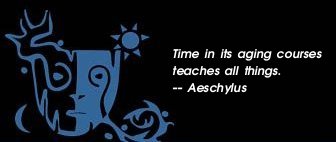|

August 2007
Find myth- and Mythic Journeys-related events on our
Annual Calendar
[Images: "Corn King" © Charles Vess, www.greenmanpress.com, used by permission.]
The month of August has been called many things by different traditions. The Gaelic Scots call it Ann Lunadal, the month of the god Lugh's feast. The Aleuts call it the Warm Month. The Ugric Ostiaks (some 25,000 people who inhabit the region of the River Ob in Siberia) call it the month of the Hay Harvest. The Tartars knew it as the Grass month. The Karagasses of Central Asia knew that this was the time to dig up the lily bulbs, and they named the month accordingly. The people of Kamchatka fish by the light of the Moonlight month. In the Yukon, they know that this is the time when the swans moult, the young geese fly, and the reindeer shed the velvet from their horns. After August 1, the corn in the fields ripens as much at night as it does during the day, the time of the Corn King.
According to William Hone's The Everyday Book, or a Guide to the Year (1878) August is first month of the Egyptian calendar, called Gule. The Romans Latinized the name to Gula, which means "throat." The Roman Catholic Church proclaimed August 1 a feast day for the daughter of the tribune Quirinus, who was cured of a throat disease by kissing the chain of St Peter on this day. "Forcing the Gule of the Egyptians into the throat of the tribune's daughter, they instituted a festival to Gule upon the festival-day of St Peter ad Vincula."
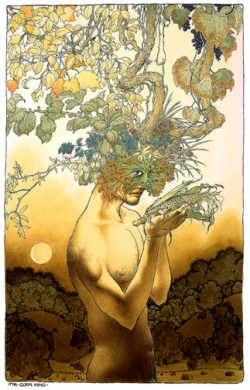 August 1 — Lammas, Lughnasadh August 1 — Lammas, Lughnasadh
From the Old English hlaf,"loaf," and maesse, "mass" or "feast," Lammas derives from the ancient English Festival the Gule of August, which honored the sacrifice of the Corn King and marked the beginning of the harvest. Lughnasadh is one of the four main festivals of the traditionall Irish calendar: Imbolc at the beginning of February, Beltane on the first of May, Lughnasadh in August, and Samhain in November. The early Celtic calendar was based on the lunar, solar, and vegetative cycles, so the actual calendar date in ancient times may have varied. Lughnasadh marked the beginning of the harvest season, the ripening of first fruits and grains. It is a time of community gatherings, market festivals, horse races, and reunions with distant family and friends. Among the Irish it was a favored time for handfastings, trial marriages that would generally last a year and a day, with the option of ending the contract before the new year, or later formalizing it as a more permanent marriage.
In Celtic mythology, the Lughnasadh festival is said to have been begun by the god Lugh as a funeral feast and games commemorating his foster-mother, Tailtiu, cleared the plains of Ireland for agriculture, laid down in the field, gave birth, and died of exhaustion. The first location of the Áenach Tailteann was at the site of modern Teltown, located between Navan and Kells. Historically, the Áenach Tailteann gathering was a time for contests of strength and skill, and a favored time for contracting marriages and winter lodgings. Peace was declared at the festival, and religious celebrations were also held. A similar Lughnasadh festival was held at Carmun, whose exact location is under dispute. Carmun is also believed to have been a goddess of the Celts, perhaps one with a story similar to Tailtiu's.
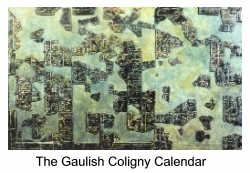 A festival corresponding to Lughnasadh may have been observed by the Gauls at least up to the first century. The Coligny calendar marks the eighth day of the first half of the month Edrinios, corresponding to the first of August, with the inscription TIOCOBREXTIO that identifies other major feasts. The same date was later adopted for the meeting of all the representatives of Gaul at the Condate Altar in Gallo-Roman times. During the reign of Augustus Caesar the Romans instituted a celebration on August 1 to the genius of the emperor in Lyon, a place believed to have also been named for the Celtic god Lugh. A festival corresponding to Lughnasadh may have been observed by the Gauls at least up to the first century. The Coligny calendar marks the eighth day of the first half of the month Edrinios, corresponding to the first of August, with the inscription TIOCOBREXTIO that identifies other major feasts. The same date was later adopted for the meeting of all the representatives of Gaul at the Condate Altar in Gallo-Roman times. During the reign of Augustus Caesar the Romans instituted a celebration on August 1 to the genius of the emperor in Lyon, a place believed to have also been named for the Celtic god Lugh.
The early English church kept this pagan dedication of the first fruits but converted it to Christian usage. Through the centuries, "loaf-mass" became corrupted in spelling and pronunciation to Lammas. On Lammas Day, loaves of bread were baked from the first-ripened grain and brought to the churches to be consecrated. On mainland Europe and in Ireland many people continue to celebrate the holiday with bonfires and dancing. The Christian church has established the ritual of blessing the fields on this day. In the Irish diaspora, survivals of the Lá Lúnasa festivities are often seen by some families still choosing August as the traditional time for family reunions and parties, though due to modern work schedules these events have sometimes been moved to adjacent secular holidays, such as the Fourth of July in the United States.
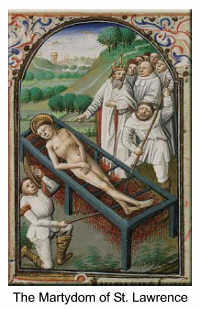 August 10 — St. Lawrence's Day August 10 — St. Lawrence's Day
When told by Roman officials to surrender the church's valuables, St. Lawrence brought the city's poor and sick. "Here is the church's treasure," he said. Rome didn't find this amusing. Legend says that he was martyred in 258 A.D. by being roasted on a grate, although some scholars believe that he was more likely beheaded. Folks in southern Europe still mark this day by only eating cold meat in remembrance of the reputed manner of his death. Fair weather on St. Lawrence's Day means a fair autumn.
August 11 — End of Dog Days
The 40-day period from July 3 to August 11 traditionally known as the dog days, the hottest and most unhealthy days of the year, end today. The term "Dog Days" was coined by the ancient Romans, who called these days caniculares dies (days of the dogs) after Sirius, the Dog Star, the brightest star in the heavens besides the Sun. The Dog Days originally were the days when Sirius, the Dog Star, rose just before or at the same time as sunrise, which is no longer true owing to precession of the equinoxes. The ancients sacrificed a brown dog at the beginning of the Dog Days to appease the rage of Sirius, believing that that star was the cause of the hot, sultry weather. According to Brady's Clavis Clanedarium (1813) the Dog Days were popularly believed to be an evil time "when the seas boiled, wine turned sour, dogs grew mad, and all creatures became languid, causing to man burning fevers, hysterics, and phrensies."
 August 17 — Beginning of Cat Nights August 17 — Beginning of Cat Nights
According to old Irish legend, witches possessed the ability to turn from human to cat and back again nine times, but with that ninth transformation, the witch would forever remain in cat form. The nights around August 17 are a time when cats are particularly "yeowly". Hence, the acknowledgement of Cat Nights. This also accounts for the belief that cats have nine lives.
August 28 — Total Eclipse of the Full Moon
The Britons called this the Grain Moon. American Indians called it the Sturgeon Moon. It is also known as the Red Moon, the Green Corn Moon, the Lightning Moon, the Dog Moon, and in India it is known as Narali Purnima, Raksha bandhan, a Hindu festival celebrating the relationship between brothers and sisters. Tonight's total lunar eclipse is the second this year, and it will be visible over the Americas, the Pacific, eastern Asia, and Australasia.
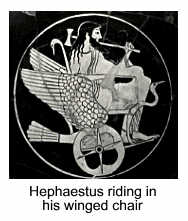 Vulcanalia/Hephæstalia Vulcanalia/Hephæstalia
August 28th is also the feast-day of the Greco-Roman lamed god of fire and smithcraft, Vulcan or Hephæstus. Because of safety concerns to the many wooden structures, his temples were always constructed outside the city. Sacrifices of fish and small animals were offered up to the flames on this day.
|
